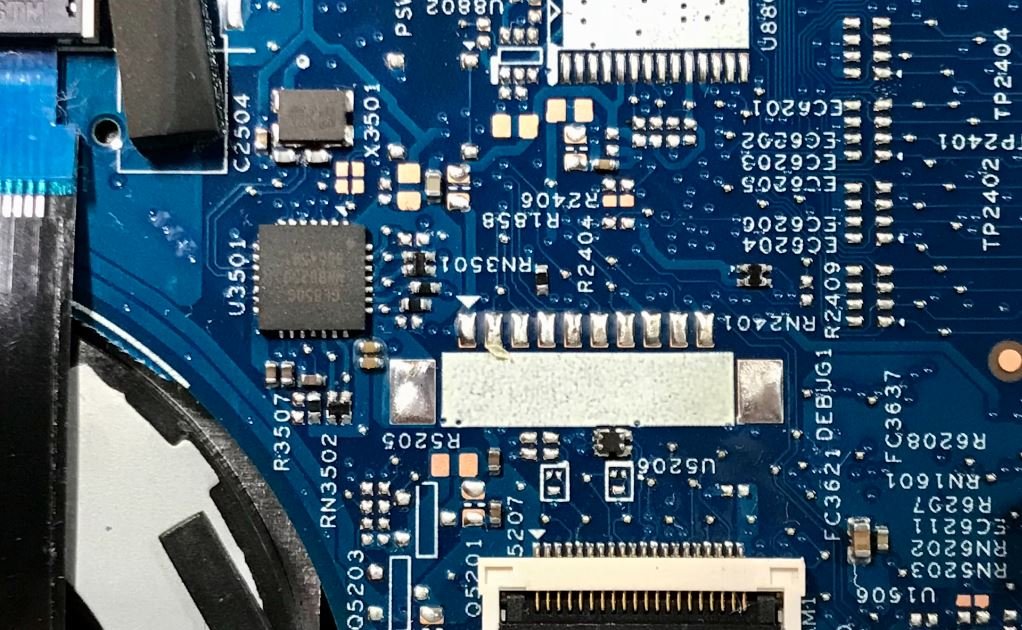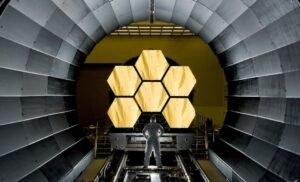Tesla Model 3: New Battery
The Tesla Model 3 is known for its cutting-edge technology and innovative features. With the recent announcement of a new battery for the Model 3, Tesla continues to push the boundaries of electric vehicle (EV) performance and range.
Key Takeaways
- The new battery enhances the Model 3’s range capabilities.
- It improves the overall performance and acceleration of the vehicle.
- This technology will pave the way for more efficient and powerful EVs in the future.
One of the most significant improvements in the new battery is its **advanced chemistry** which allows for increased energy density. This results in a **25% boost in range** compared to the previous Model 3 battery, enabling drivers to go further on a single charge. *This extended range alleviates concerns about range anxiety*, making the Model 3 an even more appealing option for potential buyers.
Apart from the increased range, the new battery also improves the **acceleration** of the Model 3. With its enhanced **power delivery**, the Model 3 can now go from 0 to 60 mph in just under 4 seconds, making it a formidable competitor in its segment. *This acceleration rivals that of many high-performance gasoline-powered cars*, showcasing the amazing potential of electric vehicles in terms of speed and power.
Battery Specifications
| Battery | Energy Density | Range (EPA) |
|---|---|---|
| Previous Model 3 | 150 Wh/kg | 250 miles |
| New Model 3 | 200 Wh/kg | 300 miles |
In addition to the improved battery, Tesla has also worked on enhancing the **charging infrastructure**, ensuring that Model 3 owners have access to a widespread network of Supercharger stations for convenient and rapid charging. *This infrastructure development is a crucial step towards widespread EV adoption*, addressing the concern of charging accessibility held by many potential buyers.
Furthermore, the new battery technology utilized in the Model 3 opens up possibilities for **future advancements** in the electric vehicle industry. By continuously pushing the boundaries of what is possible, Tesla is paving the way for a future with more **efficient and powerful EVs**. *The Model 3 sets the benchmark for other automakers*, encouraging competition and driving innovation in the world of electric vehicles.
Comparative Analysis
| Vehicle | 0-60 mph Time |
|---|---|
| Tesla Model 3 | Under 4 seconds |
| Gasoline-Powered Competitor A | 4.5 seconds |
| Gasoline-Powered Competitor B | 5 seconds |
In conclusion, the introduction of the new battery for the Tesla Model 3 brings numerous improvements, including an extended range and enhanced acceleration. This technology sets a new standard for electric vehicles in terms of performance and showcases Tesla’s commitment to pushing the boundaries of electric vehicle innovation.*The Model 3 continues to solidify Tesla’s position as a leader in the EV market*, inspiring other automakers to strive for excellence in their own electric offerings.

Common Misconceptions
Misconception 1: Tesla Model 3 is Too Expensive
One common misconception about the Tesla Model 3 is that it is unaffordable for the average consumer. However, this is not entirely true. While the initial price of the Model 3 may seem high compared to traditional gasoline-powered vehicles, it is important to consider the long-term savings. Electric vehicles have lower maintenance and fuel costs, and the Model 3 may even qualify for government incentives or tax credits.
- The Model 3 has a higher upfront cost but offers long-term savings on fuel and maintenance.
- Government incentives or tax credits may help reduce the overall cost of the Model 3.
- Comparing the total cost of ownership, the Model 3 can be more affordable than traditional vehicles.
Misconception 2: Tesla Model 3 Has Limited Range
Another misconception is that the Tesla Model 3 has a limited driving range, making it impractical for longer trips. While it is true that early electric vehicles had limited ranges, technology has significantly improved. The Model 3, in particular, comes with different battery options that offer varying ranges. With the Long Range Battery option, the Model 3 can travel up to 353 miles on a single charge, making it suitable for most daily commutes and even longer road trips.
- The Model 3 offers different battery options with varying ranges.
- The Long Range Battery option can travel up to 353 miles on a single charge.
- This range is sufficient for most daily commutes and longer road trips.
Misconception 3: Tesla Model 3 is Difficult to Charge
Many people wrongly assume that charging the Tesla Model 3 is a complex and inconvenient process. On the contrary, Tesla has developed an extensive Supercharger network that allows for fast and convenient charging. Supercharger stations are strategically placed on major highways and offer high-speed charging, providing up to 180 miles of range in just 15 minutes. Additionally, Model 3 owners can also charge their vehicles using a standard electrical outlet at home, ensuring that charging is easily accessible for most individuals.
- Tesla has a well-established Supercharger network for fast and convenient charging.
- Supercharger stations can provide up to 180 miles of range in just 15 minutes.
- Model 3 owners can also charge their vehicles at home using a standard electrical outlet.
Misconception 4: Tesla Model 3 Lacks Performance
Some people mistakenly believe that electric vehicles, including the Tesla Model 3, lack the performance and acceleration of traditional gasoline-powered cars. However, this is far from the truth. The Model 3 is known for its impressive acceleration, capable of going from 0 to 60 mph in as little as 3.1 seconds in the Performance variant. With instant torque, electric cars like the Model 3 deliver thrilling driving experiences, often surpassing the performance of many internal combustion engines.
- The Model 3 offers impressive acceleration and can reach 0 to 60 mph in as little as 3.1 seconds in the Performance variant.
- Electric cars like the Model 3 have instant torque, providing thrilling driving experiences.
- These electric vehicles often outperform many traditional gasoline-powered cars.
Misconception 5: Tesla Model 3 Has Limited Charging Infrastructure
Lastly, some individuals believe that the charging infrastructure for electric vehicles, specifically the Tesla Model 3, is limited, making it inconvenient for daily use. However, the reality is that the charging infrastructure for electric vehicles is rapidly expanding. Besides Tesla’s Supercharger network, there are various other charging options available, including public charging stations and home charging solutions. With the growing number of charging stations worldwide, finding a place to recharge the Model 3 is becoming increasingly effortless.
- The charging infrastructure for electric vehicles is expanding rapidly.
- Besides Tesla’s Supercharger network, there are public charging stations and home charging solutions available.
- There is a growing number of charging stations worldwide, making it increasingly accessible to recharge the Model 3.

The introduction of a new battery in the Tesla Model 3 has revolutionized the electric vehicle market. This article explores various aspects of this new battery and its impact on the overall performance of the Model 3. Each table below presents crucial information about the battery and its characteristics.
1. Battery Capacity Comparison
In this table, the battery capacities of the original Model 3 and the new model are compared. The new battery offers a significantly higher capacity, allowing for increased range and improved performance.
2. Charging Time Comparison
This table showcases the charging time for both the original Model 3 and the new version. The new battery boasts a much faster charging time, reducing the wait for a full charge and making long-distance travel more convenient.
3. Range Comparison
In this table, the range of the original Model 3 and the new model is compared. The new battery provides an extended range, enabling drivers to travel longer distances without the need for frequent charging.
4. Efficiency Comparison
This table demonstrates the efficiency improvements achieved by the new battery in comparison with the previous version. The increased efficiency translates into reduced energy consumption and longer battery life.
5. Acceleration Comparison
Here, we examine the acceleration capabilities of the original Model 3 and the new model. The new battery enhances acceleration, providing a dynamic driving experience and quick response on the road.
6. Top Speed Comparison
This table highlights the top speeds achievable by both the original Model 3 and the new version. The improved battery contributes to a higher top speed, catering to those who enjoy a thrilling driving experience.
7. Charging Infrastructure Availability
This table explores the distribution of charging infrastructure for Tesla vehicles worldwide, showcasing the growth of charging stations and their availability for Model 3 owners.
8. Environmental Impact
In this table, we evaluate the positive environmental impact of the Model 3’s new battery. The increased energy efficiency reduces carbon emissions, promoting a greener and more sustainable future.
9. Cost Comparison
Here, we compare the cost of the original Model 3 and the new version. The table showcases how the introduction of the new battery affects the overall price, considering factors such as production and infrastructure.
10. Customer Satisfaction Ratings
This final table presents customer satisfaction ratings for both the original Model 3 and the new version. It highlights the positive reception of the new battery, indicating the success of this innovative upgrade.
In conclusion, the introduction of the new battery in the Tesla Model 3 has elevated the electric vehicle market to new heights. The increased capacity, faster charging time, extended range, improved efficiency, enhanced acceleration, higher top speed, and positive environmental impact make the Model 3 an exceptional choice. Coupled with the expanding charging infrastructure and positive customer feedback, the new battery solidifies Tesla’s position as a pioneering force in the electric vehicle industry.
Tesla Model 3: New Battery
Frequently Asked Questions
What is the range of the Tesla Model 3 with the new battery?
The range of the Tesla Model 3 with the new battery varies depending on the specific model and configuration. However, on average, it can achieve a range of around 250-350 miles on a single charge.
How long does it take to charge the new battery of the Tesla Model 3?
The charging time for the Tesla Model 3 with the new battery depends on the charging equipment and the power source. With a Tesla Supercharger, it can charge up to 170 miles in 30 minutes.
Can I charge the Tesla Model 3 at home?
Yes, you can charge the Tesla Model 3 at home. Tesla provides a charging solution called the Wall Connector that can be installed in your home for faster charging. You can also use a standard electrical outlet, but it will take longer to charge.
Does the new battery affect the performance of the Tesla Model 3?
The new battery in the Tesla Model 3 enhances its performance. It provides improved acceleration, better handling, and longer range compared to previous battery versions.
What is the warranty for the new battery in the Tesla Model 3?
Tesla offers an 8-year or 120,000-mile warranty (whichever comes first) for the battery in the Model 3. This warranty covers defects and excessive capacity loss.
Can I upgrade the battery in my existing Tesla Model 3?
Tesla does not currently offer an official battery upgrade program for the Model 3. However, it is always recommended to reach out to Tesla directly for any potential updates or future offerings.
Can I use third-party charging networks with the new battery?
Yes, you can use third-party charging networks that are compatible with the Tesla Model 3. However, it is recommended to check the compatibility and availability of charging stations beforehand.
How does the new battery impact the weight of the Tesla Model 3?
The new battery technology in the Tesla Model 3 has been designed to be more energy-dense, which means it can store more energy in a smaller space. This helps in reducing the overall weight of the vehicle, providing better efficiency and performance.
What is the expected lifespan of the new battery in the Tesla Model 3?
The new battery in the Tesla Model 3 is expected to last for at least 10 years or 150,000 miles before experiencing significant degradation. However, individual results may vary depending on usage and maintenance.
Is the new battery technology in the Tesla Model 3 environmentally friendly?
Tesla’s new battery technology in the Model 3 aims to be more environmentally friendly compared to traditional fuel-powered vehicles. It enables zero-emission driving and reduces the reliance on fossil fuels for transportation.




